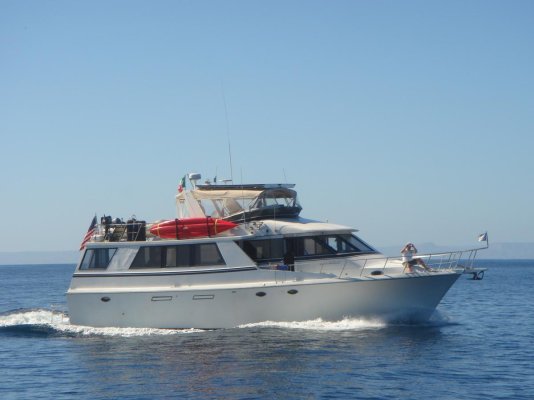I have the inverter set to cut out when the batteries are down to 80%. As a rough guess it looks like in this situation we would probably need to run the generator for a few hours in the morning and evening if we aren't traveling. How does this compare?
She asked me to turn off the genny because the diesel fumes are bothering her.
Nova Kool. That is one of the manuals that I either haven't found yet, or haven't gotten around to reading. If it goes to AC when available, then I don't have to worry about turning off the DC breaker. One less thing to do.

In "normal" weather -- mostly meaning not July and August around here -- we run the genset 2x/day, morning and evening for an hour or two each, when at anchor. The real "hour or two each" time mostly depends on how long it takes to make whatever meal we're doing in the electric galley at the time. During those periods, we charge batteries; make hot water; run the fridges on AC for a while; may or may not run the ACs (aircons), depending.
That's pretty much without regard to depth of discharge, although we rarely exceed 50%. We have AGMs and I'm not afraid to use 'em. The oldest bank is starting it's 11th season now, showing signs of age but still working... so I've gotten my money's worth, I think
In really hot weather, we usually run the genset from dock to dock, to keep interior temps and humidity bearable.
Our NovaKool fridges work that way, too: when AC is present, they'll use that, otherwise they default to DC. (The power supply is simply a converter, uses AC to make DC to run the DC compressor. Much like a laptop -- or similar -- power supply.)
You probably shouldn't be noticing diesel fumes, although I can see that being dependent on open doors, hatches, portlights, etc. and which way the wind is blowing...
-Chris



